-
 Bitcoin
Bitcoin $105,213.9543
-1.43% -
 Ethereum
Ethereum $2,534.1529
-5.66% -
 Tether USDt
Tether USDt $1.0004
0.02% -
 XRP
XRP $2.1293
-3.62% -
 BNB
BNB $651.6070
-1.04% -
 Solana
Solana $145.6637
-5.96% -
 USDC
USDC $0.9996
-0.01% -
 Dogecoin
Dogecoin $0.1768
-4.52% -
 TRON
TRON $0.2701
-0.48% -
 Cardano
Cardano $0.6330
-5.47% -
 Hyperliquid
Hyperliquid $41.0199
-0.92% -
 Sui
Sui $3.0216
-7.45% -
 Bitcoin Cash
Bitcoin Cash $435.1142
1.00% -
 Chainlink
Chainlink $13.1295
-7.22% -
 UNUS SED LEO
UNUS SED LEO $9.0033
1.58% -
 Stellar
Stellar $0.2582
-4.32% -
 Avalanche
Avalanche $19.0562
-7.26% -
 Toncoin
Toncoin $2.9869
-4.96% -
 Shiba Inu
Shiba Inu $0.0...01192
-3.81% -
 Hedera
Hedera $0.1561
-5.81% -
 Litecoin
Litecoin $84.9066
-3.04% -
 Polkadot
Polkadot $3.7754
-5.29% -
 Ethena USDe
Ethena USDe $1.0002
-0.02% -
 Monero
Monero $308.5756
-4.32% -
 Dai
Dai $0.9997
-0.01% -
 Bitget Token
Bitget Token $4.5027
-2.45% -
 Uniswap
Uniswap $7.3970
-4.96% -
 Pepe
Pepe $0.0...01090
-7.41% -
 Aave
Aave $279.5603
-5.99% -
 Pi
Pi $0.5658
-8.02%
How do you interpret the PSY psychological line breaking through 75? Should you reduce your position when market sentiment is overheated?
When the PSY line breaks through 75, it signals overbought conditions in crypto markets, suggesting traders reduce positions to manage risk, confirmed by other indicators like RSI and MACD.
Jun 12, 2025 at 11:15 pm
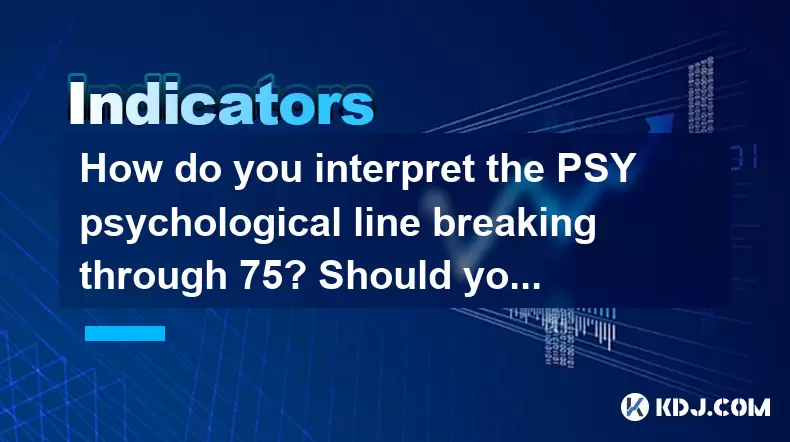
The PSY (Psychological Line) is a technical indicator used in cryptocurrency trading to gauge market sentiment. It measures the percentage of days where the closing price was higher than the opening price over a specific period, typically 12 days. When the PSY line breaks through the 75 level, it is considered a signal of overbought conditions in the market. This article will explore the implications of the PSY line breaking through 75 and discuss whether it is advisable to reduce your position when market sentiment is deemed overheated.
Understanding the PSY Psychological Line
The PSY line is calculated by dividing the number of days where the closing price was higher than the opening price by the total number of days in the period and then multiplying by 100. For example, if over the past 12 days, 9 days had a higher closing price than the opening price, the PSY line would be calculated as follows:
[ \text{PSY} = \left( \frac{9}{12} \right) \times 100 = 75 ]
When the PSY line reaches or exceeds 75, it suggests that the market has been consistently bullish over the period, which can be an indication of overbought conditions. This means that the asset may be due for a correction or a period of consolidation.
Interpreting a PSY Line Breakthrough at 75
A PSY line breaking through 75 is a significant event because it indicates that the market sentiment is extremely bullish. This can be interpreted in several ways:
- Short-term Overbought Signal: A reading above 75 suggests that the market may be overextended and could be ripe for a pullback. Traders often use this as a signal to take profits or reduce their exposure to the asset.
- Potential Reversal: While not a guaranteed signal, a high PSY reading can precede a market reversal. Traders should be cautious and monitor other indicators for confirmation.
- Market Sentiment: A high PSY reading reflects strong bullish sentiment, which can be useful for understanding overall market dynamics but should not be used in isolation.
Should You Reduce Your Position When Market Sentiment is Overheated?
The decision to reduce your position when the PSY line breaks through 75 depends on several factors, including your trading strategy, risk tolerance, and the broader market context. Here are some considerations:
- Risk Management: If you are a risk-averse trader, reducing your position when the PSY line indicates overbought conditions can be a prudent move. This helps to protect your capital from potential downturns.
- Trading Strategy: If you are a momentum trader, you might choose to hold or even increase your position, as strong bullish sentiment can lead to further price increases. However, this approach carries higher risk.
- Other Indicators: It is crucial to look at other technical indicators, such as the RSI (Relative Strength Index) or MACD (Moving Average Convergence Divergence), to confirm the overbought signal. A single indicator should not be the sole basis for a trading decision.
How to Reduce Your Position Based on the PSY Line
If you decide to reduce your position when the PSY line breaks through 75, here are the steps you should follow:
- Monitor the PSY Line: Keep a close eye on the PSY line over your chosen period (typically 12 days). Use a charting platform that supports the PSY indicator.
- Confirm with Other Indicators: Look at other technical indicators to confirm the overbought condition. For instance, if the RSI is also above 70, it strengthens the case for reducing your position.
- Set a Target Reduction: Decide how much you want to reduce your position. This could be a percentage of your total holdings, such as 20% or 50%.
- Execute the Trade: Once you have confirmed the overbought signal and set your target reduction, place a sell order to reduce your position. Ensure you are using a limit order to get the best possible price.
Example of Reducing a Position
Let's say you hold 100 units of a cryptocurrency and decide to reduce your position by 30% when the PSY line breaks through 75. Here's how you would proceed:
- Calculate the Reduction: 30% of 100 units is 30 units.
- Place a Sell Order: Set a limit order to sell 30 units at a specific price that you believe is reasonable based on current market conditions.
- Monitor the Trade: Keep an eye on the order to ensure it executes at the desired price. If the market moves quickly, you may need to adjust your limit price.
Using the PSY Line in Conjunction with Other Indicators
While the PSY line is a useful tool for gauging market sentiment, it should not be used in isolation. Combining the PSY line with other indicators can provide a more comprehensive view of market conditions. Here are some other indicators to consider:
- RSI (Relative Strength Index): The RSI measures the speed and change of price movements. A reading above 70 indicates overbought conditions, which can complement a high PSY reading.
- MACD (Moving Average Convergence Divergence): The MACD can help identify trend changes and momentum. A bearish crossover (when the MACD line crosses below the signal line) can confirm an overbought signal from the PSY line.
- Volume: High trading volume can confirm the strength of a trend. If the PSY line is high and volume is also increasing, it suggests strong market participation, which may validate the overbought signal.
Practical Example of Using Multiple Indicators
Imagine you are monitoring a cryptocurrency and notice that the PSY line has reached 75. You also observe that the RSI is at 72 and the MACD has just experienced a bearish crossover. Additionally, trading volume has been increasing over the past few days. This combination of signals strengthens the case for reducing your position due to overbought conditions.
Frequently Asked Questions
Q: Can the PSY line be used for all cryptocurrencies?
A: Yes, the PSY line can be applied to any cryptocurrency as long as you have access to the necessary price data. However, the effectiveness of the indicator may vary depending on the liquidity and volatility of the specific cryptocurrency.
Q: How often should I check the PSY line?
A: The frequency of checking the PSY line depends on your trading style. For short-term traders, daily checks might be necessary, while long-term investors might monitor it weekly or monthly. Always consider the timeframe that aligns with your trading strategy.
Q: Is the PSY line more effective in bull or bear markets?
A: The PSY line can be effective in both bull and bear markets, but it is particularly useful in bull markets where overbought conditions are more common. In bear markets, the PSY line can help identify potential short-term rebounds within a broader downtrend.
Q: Can the PSY line be used for entry signals as well?
A: Yes, the PSY line can also be used to identify potential entry points. When the PSY line drops below 25, it indicates oversold conditions, which could be a signal to consider buying. However, as with overbought signals, it is important to confirm with other indicators and consider the overall market context.
Disclaimer:info@kdj.com
The information provided is not trading advice. kdj.com does not assume any responsibility for any investments made based on the information provided in this article. Cryptocurrencies are highly volatile and it is highly recommended that you invest with caution after thorough research!
If you believe that the content used on this website infringes your copyright, please contact us immediately (info@kdj.com) and we will delete it promptly.
- 5 Cryptos With Massive Upside Potential in the Second Half of 2025
- 2025-06-14 03:50:12
- Snorter Token (SNORT) Price Pumps 5% After Raising $698K In Presale
- 2025-06-14 03:50:12
- Almost a Third of Bitcoin's Supply Is Held by Centralized Treasuries
- 2025-06-14 03:45:12
- GameStop-Themed Meme Coin (GME) Soars 532% After the Video Game Retailer Announces $1.75B Notes Offering
- 2025-06-14 03:45:12
- Bitcoin (BTC) persists in a well-defined bullish structure but recent activity in spot and derivatives markets suggests a temporary
- 2025-06-14 03:40:12
- Farcaster Pro OG NFT: Claim Your Exclusive Digital Reward
- 2025-06-14 03:40:12
Related knowledge
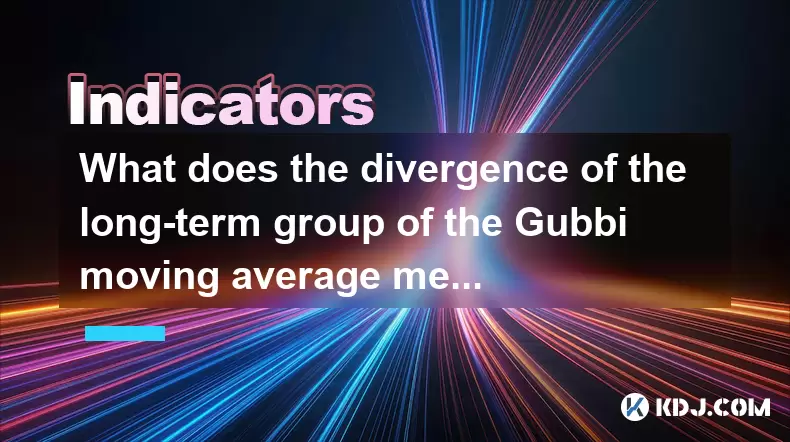
What does the divergence of the long-term group of the Gubbi moving average mean? How long can the trend last?
Jun 14,2025 at 02:56am
Understanding the Gubbi Moving AverageThe Gubbi moving average is a technical indicator used by traders in cryptocurrency markets to identify trends and potential reversals. Unlike traditional moving averages, the Gubbi variant incorporates unique calculations that emphasize price momentum and volatility adjustments. This makes it particularly useful fo...
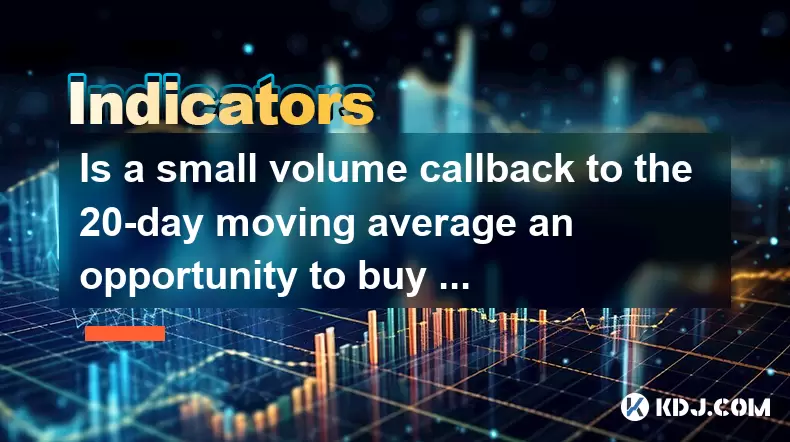
Is a small volume callback to the 20-day moving average an opportunity to buy low? What is the key to look at?
Jun 14,2025 at 02:28am
Understanding the 20-Day Moving Average in Cryptocurrency TradingIn cryptocurrency trading, the 20-day moving average (20DMA) is a commonly used technical indicator that helps traders assess the short-term trend of an asset. It calculates the average price of a cryptocurrency over the last 20 days and smooths out price volatility. When a coin experience...
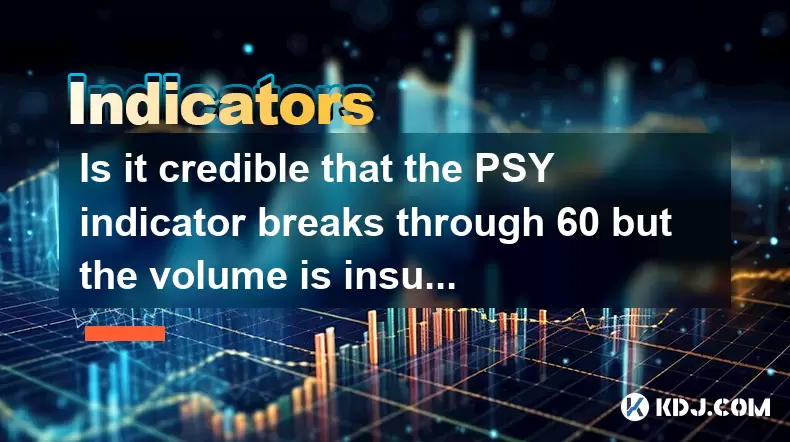
Is it credible that the PSY indicator breaks through 60 but the volume is insufficient?
Jun 14,2025 at 12:14am
Understanding the PSY Indicator in Cryptocurrency TradingThe Psychological Line (PSY) indicator is a momentum oscillator used primarily to measure the sentiment of traders and investors in financial markets, including the cryptocurrency space. It calculates the ratio of days where prices closed higher versus lower over a specified period, typically 12 o...
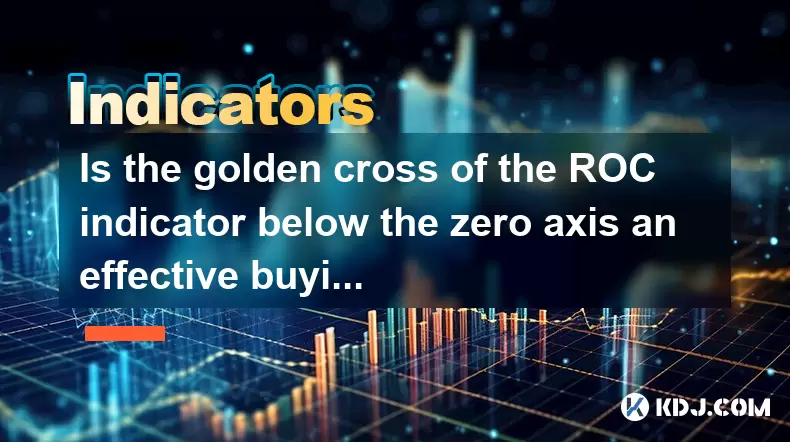
Is the golden cross of the ROC indicator below the zero axis an effective buying point?
Jun 14,2025 at 01:29am
Understanding the ROC Indicator and Its SignificanceThe Rate of Change (ROC) indicator is a momentum oscillator used in technical analysis to measure the percentage change in price between the current closing price and the closing price from a set number of periods ago. This tool helps traders assess the speed at which prices are changing, offering insi...
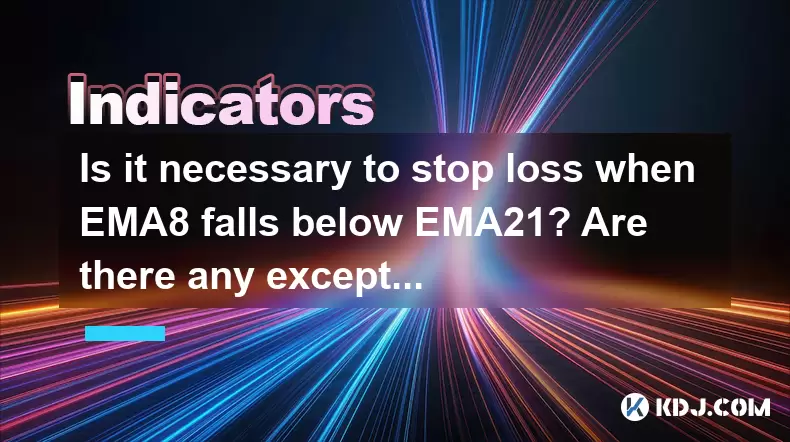
Is it necessary to stop loss when EMA8 falls below EMA21? Are there any exceptions?
Jun 14,2025 at 02:42am
Understanding EMA8 and EMA21 in Cryptocurrency TradingIn cryptocurrency trading, Exponential Moving Averages (EMAs) are widely used technical indicators to identify trends and potential reversal points. The EMA8 refers to the 8-period exponential moving average, while EMA21 is the 21-period EMA. These tools help traders make informed decisions by smooth...

Will the RSI fall after the top divergence? How to improve the judgment accuracy?
Jun 13,2025 at 11:21pm
Understanding RSI and Top Divergence in Cryptocurrency TradingThe Relative Strength Index (RSI) is a momentum oscillator widely used in cryptocurrency trading to measure the speed and change of price movements. It typically ranges from 0 to 100, with levels above 70 considered overbought and below 30 considered oversold. In crypto markets, where volatil...

What does the divergence of the long-term group of the Gubbi moving average mean? How long can the trend last?
Jun 14,2025 at 02:56am
Understanding the Gubbi Moving AverageThe Gubbi moving average is a technical indicator used by traders in cryptocurrency markets to identify trends and potential reversals. Unlike traditional moving averages, the Gubbi variant incorporates unique calculations that emphasize price momentum and volatility adjustments. This makes it particularly useful fo...

Is a small volume callback to the 20-day moving average an opportunity to buy low? What is the key to look at?
Jun 14,2025 at 02:28am
Understanding the 20-Day Moving Average in Cryptocurrency TradingIn cryptocurrency trading, the 20-day moving average (20DMA) is a commonly used technical indicator that helps traders assess the short-term trend of an asset. It calculates the average price of a cryptocurrency over the last 20 days and smooths out price volatility. When a coin experience...

Is it credible that the PSY indicator breaks through 60 but the volume is insufficient?
Jun 14,2025 at 12:14am
Understanding the PSY Indicator in Cryptocurrency TradingThe Psychological Line (PSY) indicator is a momentum oscillator used primarily to measure the sentiment of traders and investors in financial markets, including the cryptocurrency space. It calculates the ratio of days where prices closed higher versus lower over a specified period, typically 12 o...

Is the golden cross of the ROC indicator below the zero axis an effective buying point?
Jun 14,2025 at 01:29am
Understanding the ROC Indicator and Its SignificanceThe Rate of Change (ROC) indicator is a momentum oscillator used in technical analysis to measure the percentage change in price between the current closing price and the closing price from a set number of periods ago. This tool helps traders assess the speed at which prices are changing, offering insi...

Is it necessary to stop loss when EMA8 falls below EMA21? Are there any exceptions?
Jun 14,2025 at 02:42am
Understanding EMA8 and EMA21 in Cryptocurrency TradingIn cryptocurrency trading, Exponential Moving Averages (EMAs) are widely used technical indicators to identify trends and potential reversal points. The EMA8 refers to the 8-period exponential moving average, while EMA21 is the 21-period EMA. These tools help traders make informed decisions by smooth...

Will the RSI fall after the top divergence? How to improve the judgment accuracy?
Jun 13,2025 at 11:21pm
Understanding RSI and Top Divergence in Cryptocurrency TradingThe Relative Strength Index (RSI) is a momentum oscillator widely used in cryptocurrency trading to measure the speed and change of price movements. It typically ranges from 0 to 100, with levels above 70 considered overbought and below 30 considered oversold. In crypto markets, where volatil...
See all articles

























































































